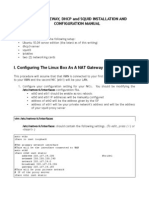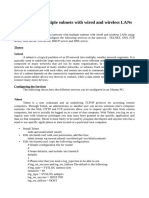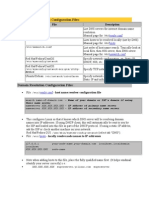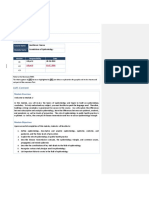0% found this document useful (0 votes)
50 views26 pagesChapter 4 Network Management
Chapter 4 covers essential aspects of network management, including TCP/IP networking, configuring Linux for networking, setting up a Linux router, and configuring an Apache web server. It provides hands-on exercises for practical experience with network commands, configuration files, and services like DNS, Postfix, and Squid. The chapter emphasizes the importance of these skills for managing network resources and hosting web services in a Linux environment.
Uploaded by
veohackCopyright
© © All Rights Reserved
We take content rights seriously. If you suspect this is your content, claim it here.
Available Formats
Download as DOCX, PDF, TXT or read online on Scribd
0% found this document useful (0 votes)
50 views26 pagesChapter 4 Network Management
Chapter 4 covers essential aspects of network management, including TCP/IP networking, configuring Linux for networking, setting up a Linux router, and configuring an Apache web server. It provides hands-on exercises for practical experience with network commands, configuration files, and services like DNS, Postfix, and Squid. The chapter emphasizes the importance of these skills for managing network resources and hosting web services in a Linux environment.
Uploaded by
veohackCopyright
© © All Rights Reserved
We take content rights seriously. If you suspect this is your content, claim it here.
Available Formats
Download as DOCX, PDF, TXT or read online on Scribd
/ 26























































































